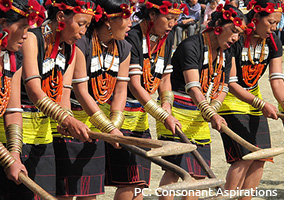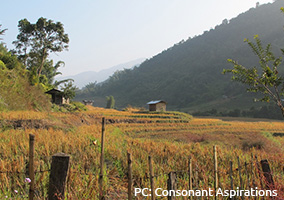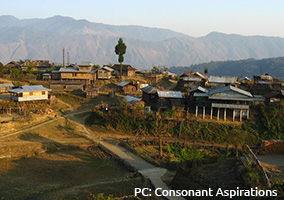
Zunheboto Travel Guide
How would you like to spot some of the Khalij Pheasant hopping or flying around in the wild? Wouldn't you love to spot an endangered bird like the bright red Blyth's Tragopan by a gurgling river or stream? How would you like to walk just a few miles to spot the glistening snow of the Mount Everest peak in the morning sun? Surely, these are not some things that words can express, but a visit to the district of Zunheboto in Nagaland would grace you with these sights.
Surrounded by major districts and hilly terrains on all side, the district of Zunheboto is just as protected like the white flower that its name suggests. The name Zunheboto comes from the Sumi language, in which Zunhebo means the white flowering shrub and 'to' means the hill top. So, Zunheboto is the lovely shrub that grows on the hill top. Isn't just the mere name enough to get you excited?
A trip to Zunheboto would be a thrill for the anthropologists who would get their fill of rich martial tribal festivals and culture of the Sumi tribes and the ornithologists who have plenty and more reasons to go bird watching. The village of Lumami is the center for Nagaland University in this district of Zuhneboto. Reaching the district is possible from Kohima or Tuensang and it has even got accessibility from Port Blair.
The outdoor and adventure loving ornithologists and wildlife photographers do make sure that they visit the lush and evergreen dense forests of the Satoi Range. The range has hill slopes lined with rhododendrons and other plants and native vegetation apart from housing the Blyth's Tragopan. The Ghosu bird sanctuary is a big draw for migratory birds and so photographers troop in to Zunheboto during the season every year between June and September.
The bright and colorful Sumi tribes are known for their hunting and fighting skills, however these days, they have settled down to agriculture and a rather peaceful way of life.
A major percentage of the population has got converted to Christianity.
Things to do in Zunheboto

Enjoy the beautiful harvest festival 'Ahuna festival'.

Visit mist covered Tizu valley.

Visit the beautiful Vishepu village.
Best Time to visit Zunheboto
Summer
The high altitudes of the district ensure that the summers are pleasant and moderate and perfect for spotting birds and even the Mount Everest. Book your trip between February and May as this time happens to be the Summer season and you shall be able to go trekking or camping quite easily during this time of the year.
Monsoon
The time from June to September, happen to be the rainy Zunhebotoths of the year at Zunheboto. The temperature falls low enough and still becomes a big draw for migratory birds. But to say the truth, the entire year, you would be able to witness rains in the district and in higher altitudes, the chill of the winter season would set in rather too soon.
Winter
The time from November end to January, you would experience severe cold winds from the North coming in unhindered towards Zunheboto. The winter temperature would be around 10 degree Celsius on an average making it difficult for any outdoor activity.
How to reach Zunheboto
Zunheboto by Air
Dimapur Airport is 80 kilometers away from Zunheboto and it is well connected to Guwahati airport that is connected nationally and internationally too.
Zunheboto by railways
Dimapur and Guwahati railway stations are ideal for you to reach this beautiful place in Nagaland. You shall get trains from various locations and regions in India.
Zunheboto by road
Zunheboto lies on National Highway 61 and it is very close to Mokokchung. By road, it lies around 150 kilometers from Kohima .